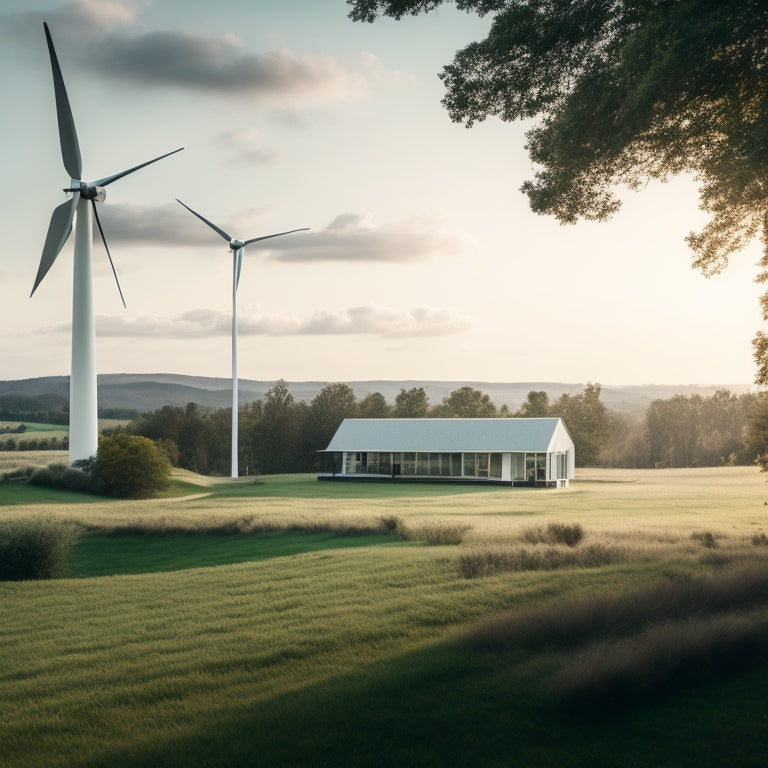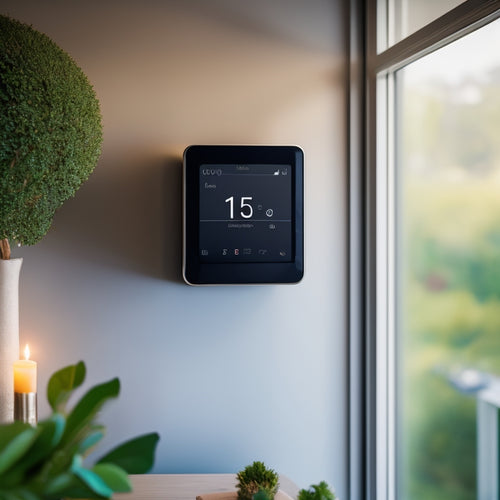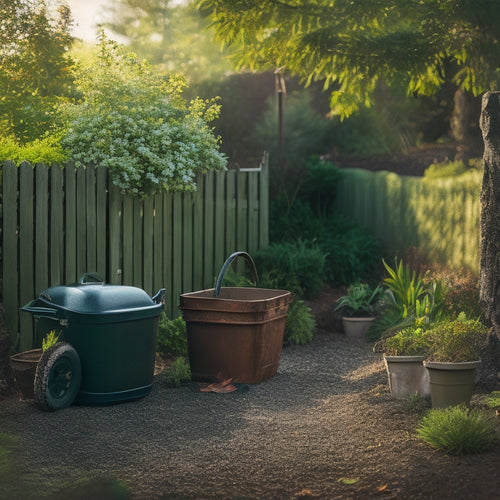
3 Efficient Battery Options for Home Wind Power
Share
When choosing a battery for your home wind power system, you have three efficient options to evaluate. Deep cycle batteries, available in flooded and AGM types, offer a cost-effective solution, but flooded batteries require regular maintenance. Lithium-ion batteries provide higher energy density and a longer lifespan, making them ideal for small-scale systems. Lead-acid batteries are a cost-effective alternative, but have a shorter lifespan and require regular maintenance. By assessing the benefits and drawbacks of each option, you can select the most suitable battery for your system, and taking a closer look at each option can help you make a more informed decision.
Key Takeaways
- Flooded batteries offer an affordable option for home wind power, but require regular maintenance for electrolyte levels.
- AGM batteries provide a maintenance-free solution, albeit at a higher cost than flooded batteries.
- Lithium-ion batteries are ideal for small-scale wind power systems with limited space due to their higher energy density.
- Lead-acid batteries provide a cost-effective alternative to lithium-ion batteries, with a proven track record for reliability and affordability.
- Considering energy savings and tax credits can help offset the costs of renewable energy systems, including battery solutions.
Deep Cycle Battery Solutions
Three types of deep cycle batteries are commonly used for home wind power systems: flooded, AGM (Absorbed Glass Mat), and gel cell batteries.
You'll want to evaluate each option carefully, as they've distinct advantages and disadvantages. Flooded batteries are the most affordable, but they require regular maintenance to verify the electrolyte levels are adequate, similar to how solar-powered stations require site assessments for ideal installation.
Additionally, reflecting on the potential energy savings and tax credits associated with renewable energy systems can help offset the costs.
AGM batteries, on the other hand, are sealed and maintenance-free, making them a convenient choice. However, they're more expensive than flooded batteries.
Both flooded and AGM batteries are suitable for home wind power systems, but you'll need to weigh the costs and benefits before making a decision.
Lithium-Ion Battery Advantages
You've considered flooded and AGM batteries for your home wind power system, but now it's time to investigate the advantages of lithium-ion batteries.
These batteries offer a significant upgrade regarding energy density, meaning they pack more power per unit of weight and volume. This makes them ideal for small-scale wind power systems where space is limited.
Furthermore, lithium-ion batteries are vital for energy storage components, which account for 15-20% of total expenditure in solar-powered EV charging infrastructure.
Additionally, their longer lifespan reduces the need for frequent replacements, saving you time and money in the long run, much like how longer lifespans of energy storage components can lower replacement expenses in solar-powered EV charging infrastructure.
Lead-Acid Battery Options
As you weigh your options for home wind power energy storage, lead-acid batteries emerge as a cost-effective alternative to lithium-ion batteries.
They're a well-established technology with a proven track record, offering a reliable and affordable solution for energy storage. Furthermore, when considering the electrical infrastructure upgrades required for EV charging infrastructure, grid capacity assessments play an essential role in preventing outages.
Lead-acid batteries have a shorter battery lifespan, typically ranging from 5 to 10 years, depending on the depth of discharge and maintenance. Speaking of maintenance, lead-acid batteries require regular checks and maintenance to guarantee peak performance, including watering and equalization.
While they may not be as efficient as lithium-ion batteries, lead-acid batteries are a viable option for those on a budget, offering a lower upfront cost and acceptable performance for small to medium-sized wind power systems.
Frequently Asked Questions
Can I Use Car Batteries for My Home Wind Power System?
You can use car batteries for your home wind power system, but consider the advantages, like lower upfront costs, and lifespan considerations, like deeper discharge cycles, before making a decision that'll impact your energy independence.
How Often Should I Inspect and Maintain My Wind Power Batteries?
Like a doctor checking essential signs, you should regularly inspect your wind power batteries to secure a healthy battery lifespan, sticking to a strict maintenance schedule to prevent corrosion and assure peak performance.
Are There Any Safety Concerns With Storing Batteries Indoors?
When storing batteries indoors, you'll want to guarantee proper ventilation to prevent hydrogen gas buildup, which can be explosive; follow manufacturer guidelines for battery ventilation requirements to maintain indoor battery safety and avoid potential hazards.
Can I Mix and Match Different Battery Types in My System?
You'll need to verify battery compatibility when mixing types, considering charging differences like voltage, ampere-hour capacity, and chemistry to avoid system inefficiencies, and potentially, safety risks; research and consult experts to secure a harmonious, efficient setup.
Will My Wind Power System Still Work During a Grid Outage?
You'll achieve grid independence with a properly designed system, ensuring your energy storage can supply power during outages. Your wind power system will continue to generate and store energy, providing uninterrupted power when you need it most.
Related Posts
-

Smart Energy: Greener Homes With Connected Power Devices
You can control and optimize your energy consumption with smart energy devices, reducing your carbon footprint by up ...
-

10 Green Waste Solutions Every Homeowner Should Know
You can make a significant impact on the environment by implementing green waste solutions at home. Consider composti...
-

10 Best Sustainable Waste Management Solutions for Green Homes
You're likely unaware that the average green home generates over 2 kilograms of waste daily, but with the right susta...


